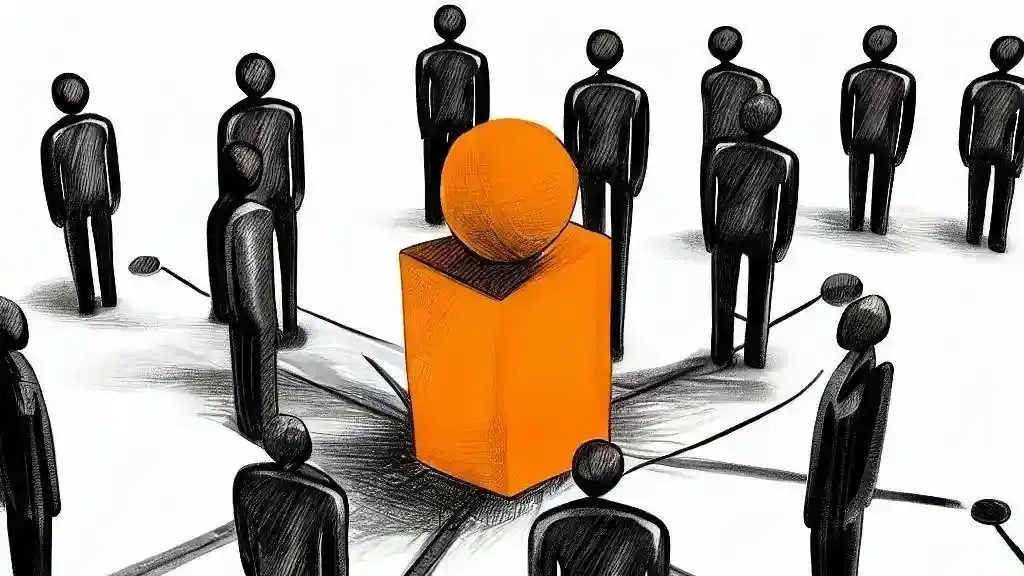 illustration: bing.com/create
illustration: bing.com/createWhat is the selfish trap technique? Dariusz Doliński, Tomasz Grzyb, and Wojciech Kulesza from SWPS University explain that its effectiveness depends on how the request is made. It should be framed so that individuals who consider themselves intelligent feel compelled to comply. Refusal should make them feel they lack the quality in question.
Even as children, we unknowingly fall into this trap, but adults are just as susceptible. To test this, the researchers conducted two experiments.
Not a Compliment, Nor a Coincidence
In the first experiment, the researchers tried to pressure people into filling out a survey. They used the term "intelligence" because most people see themselves as intelligent, and belief in one’s intellectual abilities is important for self-esteem. The researchers hypothesized that referencing this trait would make people more inclined to agree. The study included 532 participants, both women and men.
- In the first part, the researcher approached individuals at a bus stop, asking them to complete a survey needed for academic credit.
- In the second part, the researcher expanded the request, stating the survey was intended for intelligent people.
In the first part, 174 out of 532 participants (about 33%) agreed to participate. In the second part, 279 participants (over 52%) complied. The difference between these results was statistically significant.
- First, the design of the initial experiment allowed for multiple interpretations, such as seeing it as a compliment. The statement mentioned seeking intelligent people, and the person was implied to be one of them. The second experiment eliminated these doubts, explains Prof. Dariusz Doliński, one of the study authors, in a summary published on SWPS University`s website. - Second, when two experiments with different scenarios yield similar patterns, the researcher gains confidence that it’s not a coincidence. Third, if only the first experiment were conducted, doubts might arise as to whether the technique works only for gaining consent to participate in a survey and not for more significant decisions.
Rationality? We Like to Have It
The next phase of the study tested whether appealing to participants` sense of rationality would be equally compelling. The results were just as clear.
In the first scenario, a car dealership employee called a client, asking if they wanted to schedule a vehicle inspection at an authorized service center. If the client agreed, an appointment was made. In the second scenario, the conversation was identical, but the employee added that studies show rational customers prefer authorized service centers.
In the first scenario, 25 out of 60 participants (about 42%) agreed to the inspection. In the second scenario, 43 out of 60 participants (nearly 72%) agreed. Observing actual behavior, 22 participants (over 36%) from the first group showed up for the inspection, compared to 40 participants (over 66%) in the second group.
1049 journalists in Europe silenced by lawsuits 👇
Opportunities and... Risks
The SWPS researchers emphasize that the selfish trap is not inherently unethical. It can be used for positive purposes, such as discouraging harmful habits, adopting healthier routines, or supporting important causes. However, it can also be employed as a manipulation technique.
- For any influence technique, reflection is the best defense. One should avoid acting automatically and instead consider whether the suggestion aligns with their values and personal interests, explains Prof. Doliński in the study’s summary. - If the balance is negative, a response such as "Perhaps some intelligent people do this, but others do not. I belong to the latter group, thank you for the suggestion, but I’ll pass" is sufficient.
The concept of the selfish trap, a new social influence technique not previously described in literature, was presented by SWPS University psychologists Professors Dariusz Doliński, Tomasz Grzyb, and Wojciech Kulesza in the journal Social Influence.
source: SWPS University
COMMERCIAL BREAK
New articles in section Media industry
Advertising market 2025. Poland, Europe and the World
Marcin Grządka
The global advertising market is growing by 8.8% in 2025 and will reach a value of 1.14 trillion dollars. The industry result in Europe records slightly lower dynamics, at the level of 5.8%. In this comparison, Poland performs clearly above the average. We will record an increase of 8.9% this year and a value of 18.56 billion PLN - estimates WPP Media in the annual report "This Year Next Year".
The print media market 2025. Three global trends
Krzysztof Fiedorek
The market value is 359.53 billion dollars, yet the erosion is visible to the naked eye. The decline for newspapers will amount to -2.3 percent. Despite this, print retains strength: it generates 76 percent of subscription revenues and enjoys 82 percent consumer trust. The future of the industry is defined by hybrid strategies and niche specialization.
Journalism in the age of AI. Why people prefer humans over machines
Krzysztof Fiedorek
Only 12% of people accept news created solely by AI, while 62% prefer those written by humans. At the same time, only 19% notice labels indicating the use of artificial intelligence, while younger audiences ask AI to explain the content to them. These are the findings of the Reuters Institute report on artificial intelligence in media.
See articles on a similar topic:
Media Subscriptions to Replace Advertising. TMT Predictions 2018
BARD
Some publishers already consider attempts to generate revenue from online advertising a waste of time. According to the "TMT Predictions 2018" report by Deloitte, by the end of 2018, half of all adults in developed countries will have at least two online media subscriptions.
Poles on the Internet. RegionyNEXERY 2024 Report
KFi
The Internet not only connects people but also changes their daily habits in ways that seemed unattainable just a few years ago. Over 40% of Poles work remotely, and IoT devices are gaining popularity in rural areas. The #RegionyNEXERY 2024 report reveals surprising facts about the digital reality.
Clickbait Uncovered. How Online Headlines Evolved Over 25 Years
Krzysztof Fiedorek
Researchers from the Max Planck Institute analyzed 40 million headlines from the past 25 years. They are getting longer, more emotional, and negative, with a clear influence of clickbait style. Even reputable media use strategies and tricks to grab attention.
Disinformation and Fake News. Experts Discuss Challenges for Journalists
RINF
The pandemic, followed by the war in Ukraine, triggered a massive wave of disinformation in media and social channels. Experts at the Impact’22 Congress in Poznań and the European Economic Congress in Katowice discussed effective strategies to combat disinformation.






























